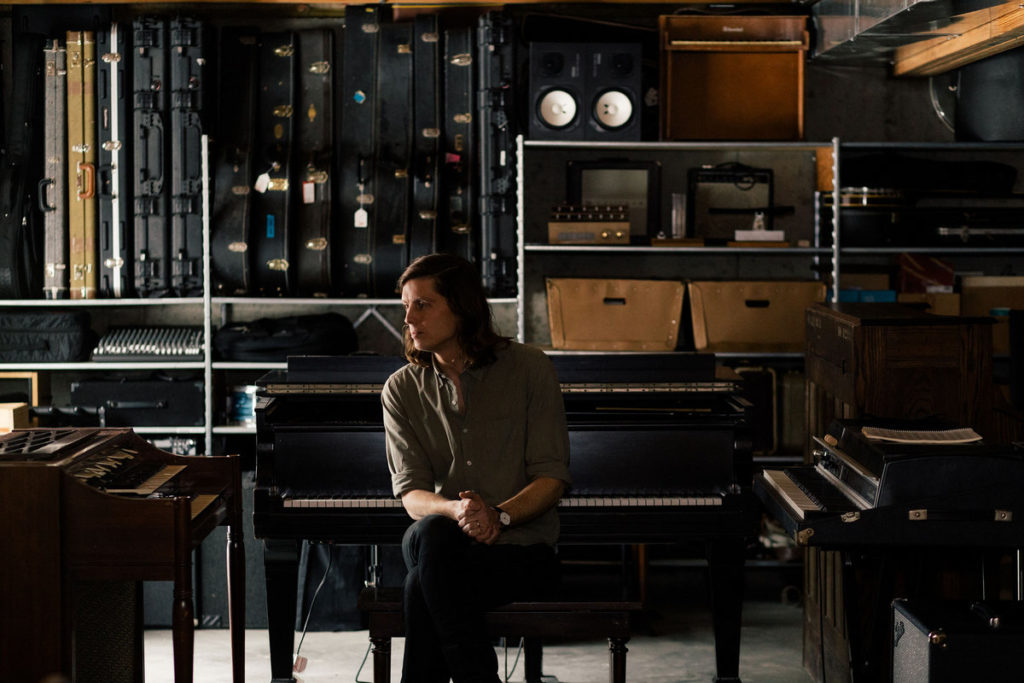
Erik Hall isn’t 18 musicians, but you could be forgiven for thinking that he is. He’s recorded music as a solo artist and with the group In Tall Buildings; before that, he also had stints in His Name Is Alive and NOMO. For his new album, he opted for a particularly ambitious maneuver: recording Steve Reich’s Music For 18 Musicians. The ensuing record is both a loving version of a minimalist classic and a work that shows the impressive flexibility within Reich’s composition. I talked with Hall about the making of this album and his own musical journey over the years.
Do you remember where you were when you first heard Music For 18 Musicians?
The very first time I heard the piece I was driving a car from Toronto to Ann Arbor, Michigan where I was in school. The details of the trip aren’t themselves particularly memorable, but the actual drive with that music playing is cemented in my brain. I’d recently learned of Steve Reich in my freshman year musicology course, and we’d discussed his early experimental pieces with tape loops at length. The U of M music school library had an incredible record collection, and I must have grabbed the Music For 18 Musicians CD out of curiosity. It was snowing heavily, I was driving at night through rural Ontario, and I’ll always remember the wash of thick snow flakes arcing upward in the headlights to that soundtrack of pulses and harmonies.
Were you immediately drawn to it, or did it take some time before it resonated with you?
It was immediate. But not because it was at all familiar. Until that point I hadn’t known there could be music like it. I came up studying classical music and took particularly to Ravel and Gershwin. But as a kid I was equally in love with heavy guitar music like Metallica and Tool. I think there were certain compositional choices of harmonic movement over time that had always resonated most with me, no matter what I was listening to. Jump to college, and suddenly I was being exposed to so many styles and composers, many of which felt admittedly over my head. “Come Out” and “It’s Gonna Rain,” interesting as they were to me, were homework. It wasn’t until I heard Music For 18 Musicians that I realized how important Steve Reich’s music would be to me. It was intoxicatingly good. And it felt akin, like some universal, divine message (extreme as that may sound!). It was the perfect music I hadn’t known I wanted.
When did you first get the idea to record your own version of this composition?
It was right after the new year in 2019, and I pretty much dove straight in to the process. My wife and I had recently moved from Chicago to rural southwest Michigan. My band In Tall Buildings spent 2018 with a new record and some touring, but that album cycle didn’t really carry over into the next year. I was slightly dejected and generally burnt out on the mission of a career built on songwriting. My wife, in passing, said “Have you ever thought about doing a cover of Music For 18 Musicians?” I cannot explain how instantly natural the idea seemed, like ‘No, why the heck haven’t I tried that?’ I didn’t think it would necessarily be heard by anyone or even work. But I knew right away that it would be a fun experiment, and I made it my winter project.
Besides your own, do you have a particular favorite of the existing recorded versions of it?
The first one I heard and fell in love with was actually the Nonesuch version. And it was a good while before I ever bothered to check out the ECM version. Once I did, I didn’t turn back and pretty much only ever listen to the original recording.
A decade ago, you were making music as a member of groups like NOMO and His Name Is Alive. (Full disclosure: I have a poster from the 2006 SXSW AAM party that both groups played in my office.) How did you get from there to the more minimalism-influenced side of your music today?
Oh my goodness! That’s fantastic. I remember that show well, it was my first trip to SXSW, and I think I played in both groups that day.
I think minimal instrumental music has always been running in the background of my musical life, and it’s certainly directly informed the bands I’ve been a part of. NOMO was just as much inspired by Harry Partch and the Bertoia Sonambient recordings as it was Fela and electric Miles Davis. His Name Is Alive, same thing. Touring in that band, I was just as likely to find myself playing the bass parts on the songs straight from the record as I was simply shaking a set of bells dangling from a rope for an entire 45-minute set. And the truth is, I probably have several entire records worth of unreleased instrumental music of my own. I’m starting to sort through all the stuff so I can finish some of the stronger bits and get it out there.
Are there any other composers’ works you’ve also thought about recording in a similar manner to this one?
My label and I have discussed a couple ideas since this record came about. I wouldn’t say I’m particularly interested in going too far down the road of re-recording familiar pieces. This record is just the product of an experience I wanted to have that ended up turning out pretty well… But admittedly, the question of where to go next is a good one, and currently wide open.
Follow Vol. 1 Brooklyn on Twitter, Facebook, and sign up for our mailing list.
